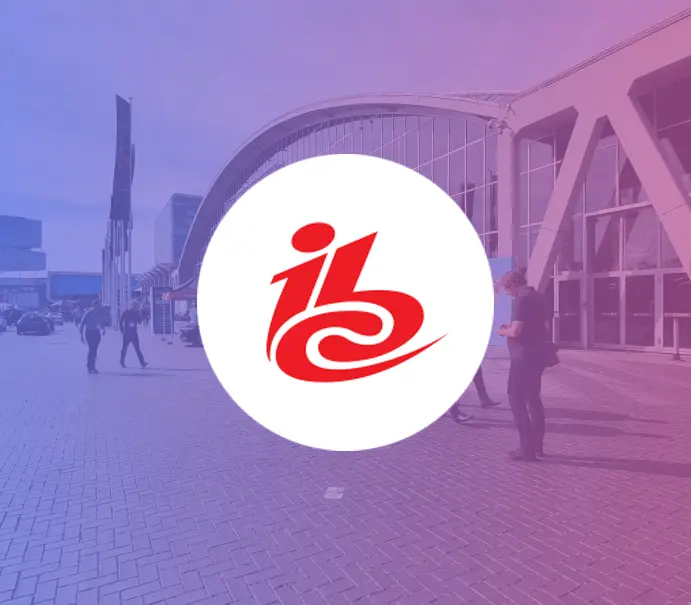Pandemic’s swift entry into the world wasn’t simple. It accompanied an array of alterations that changed the world today. Many were hesitant about the changes, but they paved the way for a better future. Last year introduced exciting directions, including cloud-based workflows, AI-driven experience, and super aggregation. Some broadcasting technology trends are lingering, while others have met their graves.
The internet is flooding with indefinite articles that loosely share the details of the latest trends, so we don’t blame you for the lack of awareness. Instead, we compiled all the information into a detailed blog post to help you scale up your business.

1. Emerging Broadcast Technology Trends Shaping Seamless Production in 2023
As a growing toddler adapts to the changing world, the broadcast industry has learned to push its limits. We have started reaching out for the outer edges of an unimaginably advanced future. This year’s trends are just the staircases to that future because the technologies made to the list offer an intriguing level of flexibility, agility, and other features compared to their predecessor.
1.1 SMPTE 2110
The traditional media transfer process involves the compression of images and videos, often resulting in low content quality. The latest version of SMPTE 2110 enables broadcasters to skip this process. Instead, they can transfer files using IP-based infrastructure, which does not interfere with the content standards.
1.2 NDI
NDI is an open-source protocol that enables video equipment to transmit and receive several signals over an internet network. It helps people connect several video devices over a network. You can access NDI-compatible devices, including switchers, and cameras, with a single touch. Leveraging the power of NDI, live production process will become much more efficient and manageable.
1.3 12G-SDI transmission standard
Broadcasters are inclining towards the 12G-SDI standard. It enables the broadcast distribution of uncompressed media and latency-free signals over coaxial cables. It is a cost-effective option compared to HDMI cables. The unique feature of the 12G standard is that it reduces the complexity of the 4K workflow as content is transmitted using a single coaxial cable.
1.4 Cloud-based broadcast workflows
To grow a business, one needs to adapt to the rapidly changing consumer needs while incorporating the latest trends and technologies. One of the most impactful technologies at present includes cloud-based broadcast workflows. It is an affordable and cost-effective option that equips us with the ability to handle multiple critical operations.
Cloud broadcasting provides better control and security over operations. It offers a large storage capacity and allows companies to have a distributed workflow and remote production. The cost-effective and minimum delay feature has made cloud-based broadcast workflows a desirable technology in the Media & Entertainment industry.
1.5 Unreal engine-powered virtual production
Unreal engine is originally a game engine that helps to customize – as you must have guessed – games. It maintains a strong connection between the hardware, software, protocols, and formats, resulting in a smooth live production. The technology has already entered the sphere of the broadcast industry, mainly used to create real-time VFX.
1.6 Broadcast Remote Production
Gone are the days when the production process was limited to a single studio. Remote production has allowed a distributed workflow where content is captured and transmitted to the studios via IP links. Later, the finalized content is processed and distributed. In addition to offering more flexibility, the trend has proved to reduce the overall cost of projects. The movement will only become more prevalent as 5G technology enters our lives.

2. Technology trends in broadcast distribution
Our eyes constantly search for pictures that closely resemble the image formed by the human eye. It is one of the most significant motives behind today’s stunning broadcast technologies. The introduction of broadcast distribution trends such as 4K resolution and HDR have only accelerated the progress.
2.1 4K Ultra HD
Each decade brings a new resolution standard for television sets. 4K Ultra HD is the latest version that self-optimizes and fits into any display panel. Unlike classic full HD TV, It can automatically reduce noise, add finer details to videos & images, and provides optimum contrast. All these features bring out videos to life. Televisions with 4K resolution typically offer trending music, games, and media streaming apps.
2.2 High dynamic range (HDR)
Unlike the older video signals, HDR stands out as a technology because it offers detailed information on brightness and a wide range of gray shades. Broadcasting brands should ensure that their camera and video encoder can capture content in various formats. The company’s structure depends on the end device and the service provided. Some broadcasters may offer on-air streaming through HLG, while others may offer HDR on online viewing devices.
2.3 Media streaming devices
Media streaming devices help people with an internet connection view entertaining videos and photos on television via an HDMI port. Technology has allowed people to watch content at any time without needing to record the show. People can binge-watch episodes of their favorite series conveniently whenever they want. Besides being fast, the media streaming devices offer voice support and portability. Thus, making the device accessible to anyone.

The year ahead
Some trends fade while others linger around for a while, which is evident from the analysis of broadcast technology trends. Time will continuously prompt inventors to uncover new technologies to add value to people’s lives and deliver quality content. The key feature in almost all the latest technologies is flexibility and cost-effectiveness.
With the ever-growing demands of the consumers, companies also need to adapt themselves according to the changing needs. The transition wouldn’t just boost company productivity but help them stand apart in the current competitive environment.



